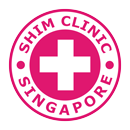One of ulcerative STDs, donovanosis, also referred to as Granuloma inguinale, might not be as well-known as other ulcer-causing STDs such as syphilis or herpes. This sexually transmitted disease is caused by a bacterium called Klebsiella granulomatis (previously known as Calymmatobacterium granulomatis). Donovanosis usually manifests in genital sores and lesions. These open wounds damage the skin and tissue. Countries with tropical and subtropical climates such as India, Southeast Asia, South Africa and South America are where this disease is more prevalent and common. However, donovanosis was once endemic in Australia although cases are truly rare nowadays.
How donovanosis spreads and its symptoms
As with other sexually transmitted disease, unprotected sex is how a person can be exposed to donovanosis. Another risk factor that may contribute to the spread of this disease is having multiple sexual partners. Besides sexual contact, however, donovanosis can also be transmitted through direct skin-to-skin contact (in rare cases) and feces. Due to this way of transmission, donovanosis may also affect children and adults who are not sexually active.
This disease usually begins with painless ulcers that are growing slowly on or around the genitals in men and women. Although not common, some people may have lesions around the anus or mouth. Despite being painless, these lesions bleed easily if they are not immediately treated. These wounds typically start as firm bumps or lumps before progressing into open lesions that are red and tender. The incubation period of donovanosis varies between 1 to 4 weeks and in some cases can even take up to a year. Cases are most prevalent in these geographic areas: Papua New Guinea, Central America, south Africa and south India. Communities which are poverty-stricken are the ones most affected by this disease. Meanwhile, 20 to 40 years old are the age groups most prone to it.
There are four types of donovanosis which can be differentiated from how the sores look like:
- Ulcerogranulomatous. This is the most common lesion type of donovanosis. The lesions look beefy-red and contain a lot of small blood vessels, which explains why they bleed easily. Normally, these lesions are not painful.
- Hypertrophic. These lesions are occasionally called ‘verrucous’ ulcers and can be entirely dry. The edges or borders of hypertrophic donovanosis are uneven.
- Necrotic. These ulcers can be painful and stem deeper into the skin. They can emit stinky smells.
- Fibrous. These ulcers can mimic scar tissue.
How to diagnose donovanosis
The only way to be sure if a person has donovanosis is to consult a doctor at a STD clinic. However, open lesions and sores on the genitals may serve as the first sign. Diagnosing donovanosis can be hard work since according to the Centers for Disease Control and Prevention (CDC), the causative organism behind this disease is laborious to culture. Using a cotton swab, healthcare professionals will take the culture of the ulcer. Prior to being observed with the help of electron microscopy, the swab will be stained by Giemsa stain (a stain commonly used for diagnosis). Electron microscopy will try to discover donovanosis bodies. These bodies are in the form of bacteria which are dark-stained. Two other methods that can be employed to diagnose donovanosis are polymerase chain reaction (PCR) and biopsies. PCR lets health professionals determine bacteria found in the ulcer according to its DNA. With biopsies, clinicians will take a sample from the infected area and identify changes in cell types that show inflammation and therefore confirming diagnosis of donovanosis.
How to treat donovanosis
The most common treatment for donovanosis is antibiotics. To be specific, the kind of antibiotics used for this sexually transmitted disease is azithromycin, which is known to halt the growth of bacteria. An infected person should feel better a few days after consuming antibiotics as the ulcers begin to heal. In some cases, however, if the infections do not go away and seem to carry on, antibiotics might need to be taken for a few weeks. This persistence of the infection can be a result of it progressing to a later stage. Sometimes, the ulcers may also get infected with secondary bacteria and cause pain. When this occurs, another medication to mitigate the pain can be prescribed. As with any other antibiotic therapy, even when the ulcers have gotten better and symptoms have abated, the prescribed amount of antibiotics should be finished. To be certain that the disease is fully healed, a follow-up visit to the doctor may be required. It is also important to note that ulcers resulting from donovanosis are a risk factor for HIV transmission, particularly when they bleed.
If left untreated, ulcers will constantly grow and affect larger and surrounding areas of previously undamaged skin. What is more, not restricted to skin damage, untreated donovanosis may attack the lymphatic vessels close to the infection. If let on for too long, it is not impossible for an infected person to develop genital cancer. Very rarely, this disease can spread to other parts of the body such as bones or liver. Should this happen, swelling and joint pains, fever and weight loss are several discomforts an infected person will experience.
Preventing donovanosis
Using barrier methods such as condoms is one way of practicing safer sex that can ward off donovanosis and other sexually transmitted disease. A person should also avoid sex with any individual with visible and conspicuous genital sores and lesions. Knowing a partner’s sexual history and limiting the number of sexual partners can also minimize risk factors for donovanosis.
Another way to make sure we are doing our best to maintain our sexual health is to get regularly tested. Shim Clinic is an STD clinic in Singapore where you can get reliable updates on your sexual health status. If you feel like you are at a heightened risk for HIV, we provide prevention methods such as HIV PrEP. We also carry HIV PEP that is best taken within 72 hours after a possible exposure to HIV. Not limited to HIV prevention methods, HPV vaccination (Gardasil-9) is also available.

